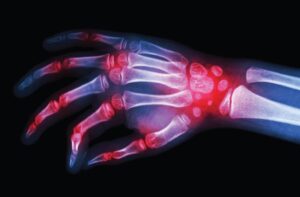 EULAR 2022 (VIRTUAL)—It is reassuring for patients and physicians when the presentation and treatment of a disease follow the course outlined in medical textbooks. However, the real world is often much more complicated than an idealized scenario, and clinicians must think critically and creatively about how to care for patients with difficult-to-manage disease.
EULAR 2022 (VIRTUAL)—It is reassuring for patients and physicians when the presentation and treatment of a disease follow the course outlined in medical textbooks. However, the real world is often much more complicated than an idealized scenario, and clinicians must think critically and creatively about how to care for patients with difficult-to-manage disease.
At the 2022 Congress of the European Alliance of Associations for Rheumatology (EULAR), Jacob M. van Laar, MD, PhD, professor of rheumatology, University Medical Center Utrecht, the Netherlands, provided an instructive lecture on the subject of difficult-to-treat rheumatoid arthritis (RA).
Challenging Conditions
Dr. van Laar began his presentation with a discussion of patient characteristics that may make efficacious treatment of RA challenging. Certain medical comorbidities may cause disease-modifying antirheumatic drugs (DMARDs) to be less effective and may increase the risk of adverse drug reactions. Also, medical comorbidities could hamper a clinician’s ability to properly grade RA disease activity, leading to inappropriate treatment decisions.
Examples: Data indicate fibromyalgia can be common in patients with severe RA.1 Obesity can decrease the effectiveness of treatments, worsen subjective measures of disease activity, reduce the likelihood of achieving remission in early disease, reduce the probability of sustained remission and worsen long-term outcomes in RA.
In addition to medical comorbidities, Dr. van Laar described work that has demonstrated a pauci-immune pathotype that can often be seen when synovial biopsies are performed in patients with difficult-to-treat RA. In these patients, the synovitis seems to be driven by stromal cell pathology, and these cells are not affected by the conventional drugs used to treat RA.
What Is Difficult-to-Treat RA?
Before proceeding with his talk, Dr. van Laar helped provide a clear definition of what may constitute difficult-to-treat RA. He noted that patients in this category should have failed to respond to at least two biologic or targeted synthetic DMARDs with different mechanisms of action after having already failed to respond to conventional synthetic DMARDs. Patients with difficult-to-treat RA may also have signs suggestive of active or progressive disease, namely one or more of the following: at least moderate disease activity, as measured by the Clinical Disease Activity Score or other tools; active synovitis on exam; elevated inflammatory markers or new erosive disease on imaging; the inability to taper glucocorticoids to <7.5 mg of prednisone per day; and/or reduction in quality of life. Finally, the management of symptoms should be perceived by patients and/or rheumatologists as problematic.

